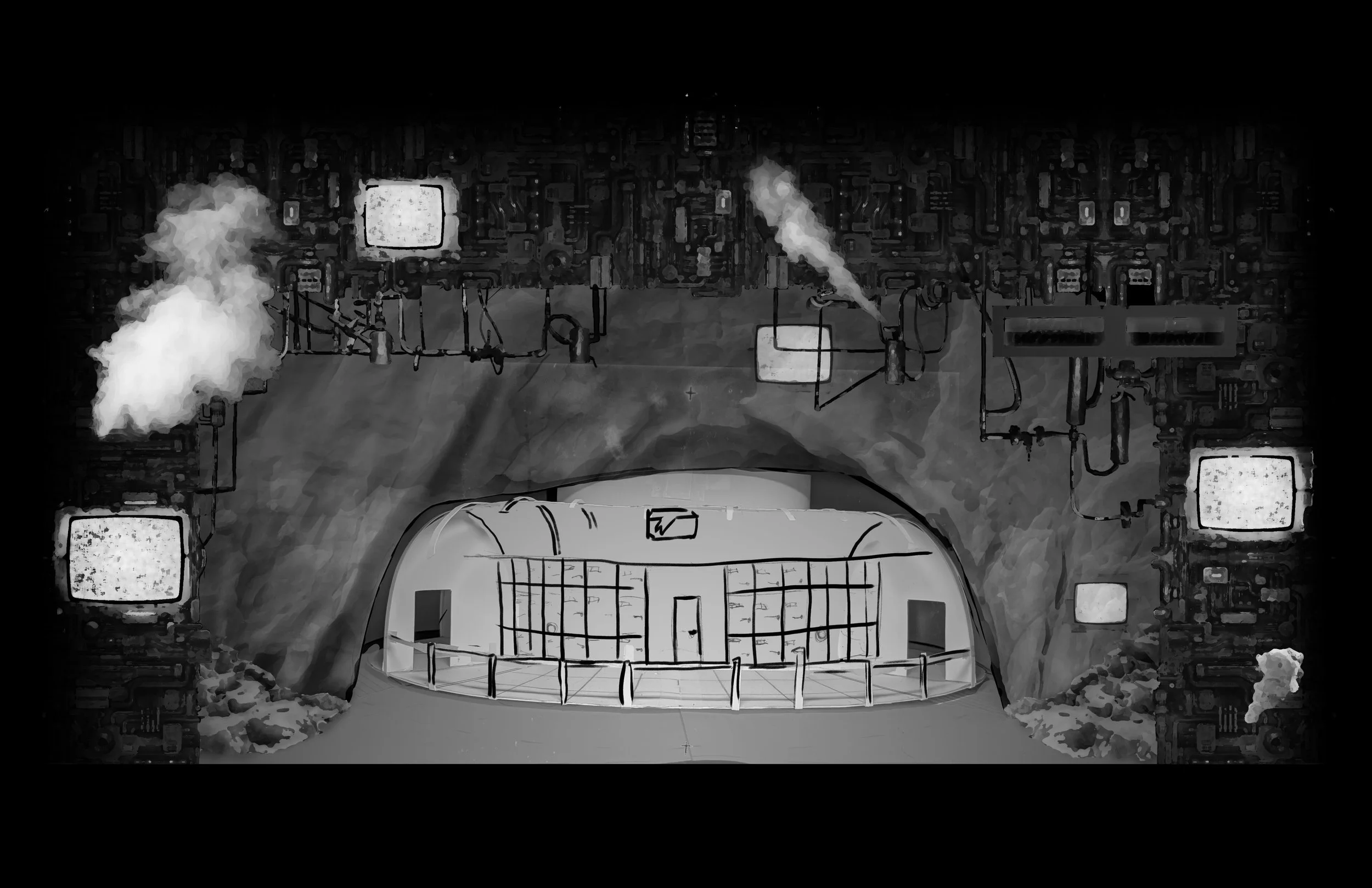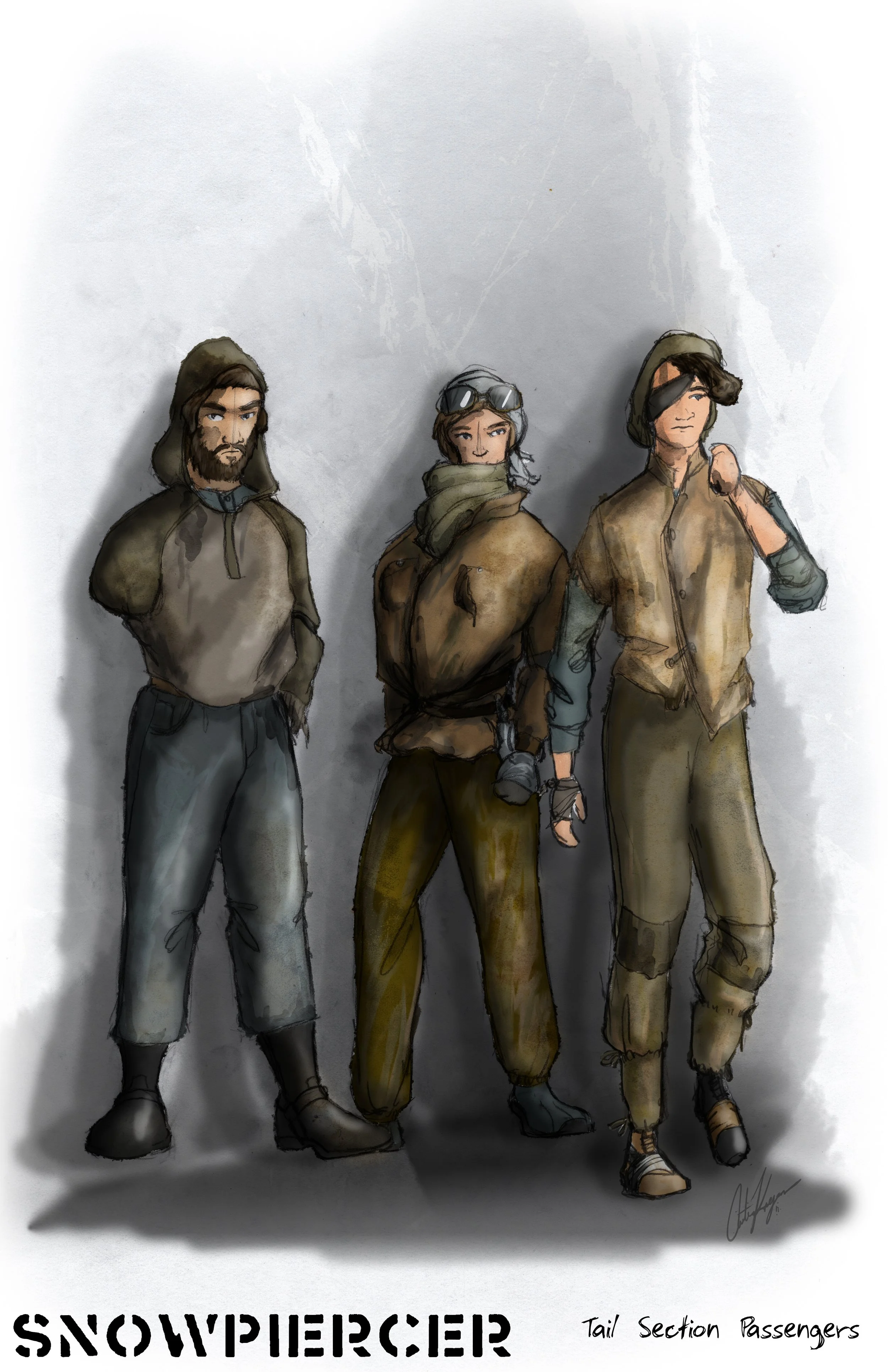SNOWPIERCER
Masters of Fine Art (Design for Entertainment Media) Thesis, UCLA
The MFA program at UCLA requires a thesis that shows an understanding of the core visual mediums of entertainment design: Costume, Scenic & Lighting. Students work more extensively on their particular area of study (in this case Costumes).
Snowpiercer was originally a graphic novel series by Jacques Lob, Benjamin Legrand, Olivier Bouquet, Alexis Nolent, and art by Jean-Marc Rochette. In 2013, it was adapted by Bong Joon-ho as an action thriller film staring Chris Evans as Curtis.
This project envisions the story of the first volume of the comic and the events of the film as a stage production.
SUMMARY
The story follows Curtis, a son of the Tail of the Train.
Curtis has grown frustrated and tired with being told that the Tail should just be thankful for what they have and is going to do something about it.
The enforcers that keep the Tail in line include guards and people of status on the train, including Minister Mason of the Brotherhood of the Immortal Engine. They take people, mostly children, from the tail and theoretically give them jobs and a new life further up in the train. The precipitating event of the story involves them coming to take a kid that is a particular size.
When a riot breaks out, Curtis and a few other people from the Tail Section take the opportunity to riot and push forward into the mid section of the train.
There they find Namgoong and Yona, a father and daughter who have been living off of the industrial zone of the ship. Namgoong can hack the doors and let them travel forward. The mid section of the train is filled with the industrial needs of a self-sustaining train: farming, food processing, water recycling, and others. All staffed by denizens of the train.
They pass a few trials to reach the front section of the train. Some of which involve losing many of the people from the Tail as guards take them out.
When they finally reach the engine, all that remains is Curtis and Yona.
Inside they find Wilford, the owner and operator of the train. He tells them that the train is dying and that they are taking people to replace broken parts of the train.
Catastrophe ensues. A fight ends with the train crashing and the only two that escape are Yona and a young boy who was taken from the tail section.
SCENIC DESIGN
The set was envisioned as a rotating, oblong unit set that could contain two train car set pieces that peaked out from a natural stone looking face wit snowdrifts on either side. During the show, the train cars would rotate and the offstage train car would be redressed, allowing for the cast to always move stage left throughout the narrative.
All of the action of the play except for the final moment when Yona and Tim exit the train. They travel through the audience and out of the theater.
Below are samples of the train units (some rendered in color and others merely black and white sketches).














COSTUME DESIGN
Snowpiercer’s narrative revolves around classism, catastrophe, and corruption. The costumes reflect massive resource gaps and indulgence. Most of the narrative takes place over the span of one day, but travels the whole length of the train from the tail to the engine, thus showing people of all types along the journey.
The story follows Curtis, a young, strong man from the Tail. Through ambitious uprising, he leads a destructive uprising that ends with most of the characters dead in a truly tragic and powerful story.
THE TAIL












OTHER TRAIN DENIZENS







TRAIN UNIFORMS AND THE BROTHERHOOD





















LIGHTING DESIGN
I envisioned the lighting of the production to start very dim and naturalistic. The story begins in the tail section of the train, which is a manufactured slum made of the cargo cars of the original train. The majority of the light would come from burning barrels and lamps in warm shades.
Then we begin to see the outside as the action of the story moves forward: a bright, searing natural light that comes and goes throughout the narrative.
Then we reach the industrial areas filled with farming, food processing, waste management, etc. All harsh florescent light or halogen-looking lights with imperfect maintenance.
As we reach the front section of the train, there is more and more use of natural lighting as well as soft, natural-looking light in many of the cars. Then there’s decorative light - neon party lights and dizzying nightclub lights.
Once the story reaches the engine, the light becomes opressive and bright.
The final scene of the show involves two children escaping into the snow. With the train blown open, the lights flood the area outside the train as they see the world beyond for the first time. A flood of light creates more of the world as they exit up one of the aisles of the theater, leaving the crashed train lit on stage as the final moment of the show.








































